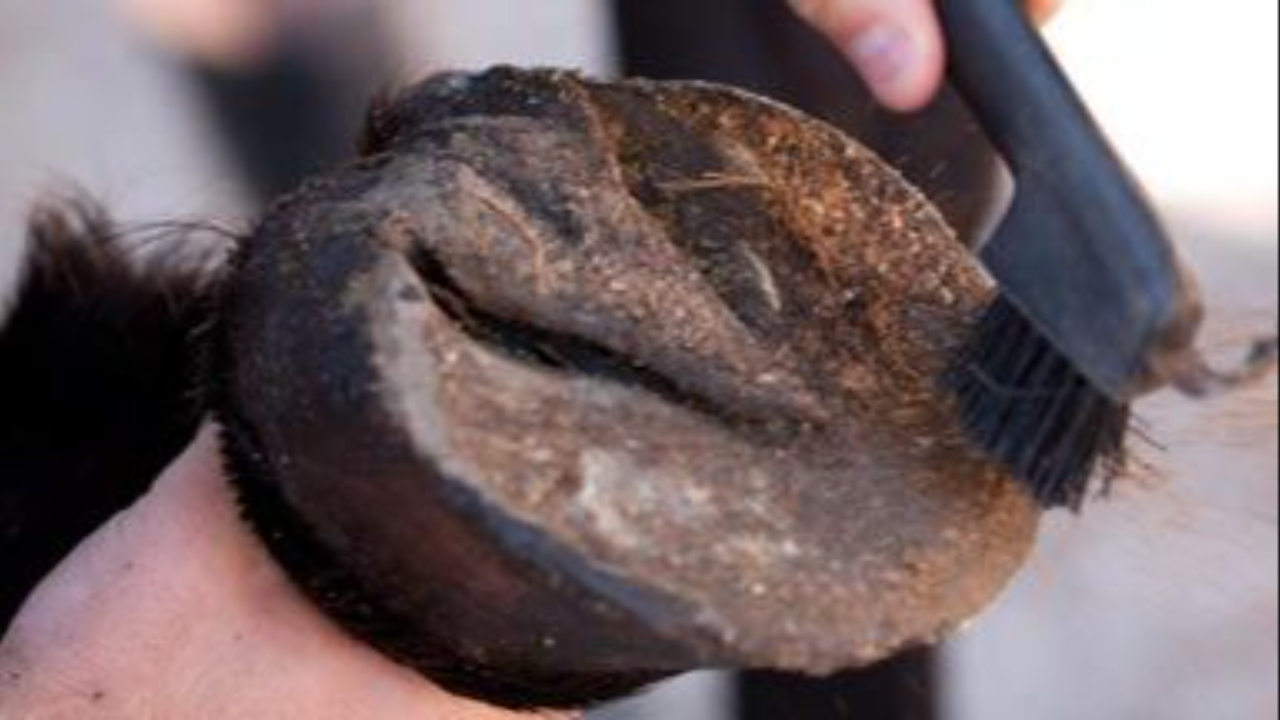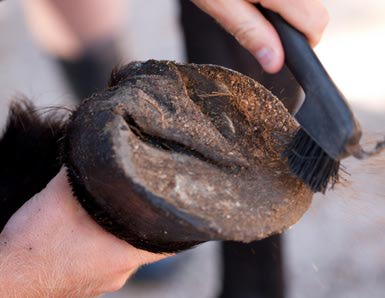Preparing for your Hoof Care Provider’s visit
Jul 07, 2015
Published in Saddle Up Magazine June 2015
Time is precious and a healthy relationship with your hoof care provider is crucial to your horse’s wellbeing. Here are a few tips of what you should expect from your provider and what he/she is hoping to see from you.
Be on time. This works both ways as everyone’s time is valuable. If your appointment is scheduled for 1pm, arrive early to prepare your horse and his surroundings for the visit. Do not arrive at 12:59pm just ahead of the trimmer and rush to halter the horse and scramble to get him ready. Instead have your horse haltered and waiting calmly, perhaps lunged if they are in a particularly anxious mood or have trouble standing still. A trimmers schedule can change throughout the day, so please allow them a little bit of leeway. Perhaps a 15 minute window surrounding the appointment time. Anything more than that and they should call to touch base and see if your schedule is flexible. If you or your trimmer are unable to make the appointment at least 24 hours notice is necessary, 48-36 hours is better, but the situation might not always allow.
Be prepared. Having the feet picked out is a nice treat and even having the horse lightly groomed should impress your trimmer. I am not stating that your horse be groomed as if they were to be shown immediately following the trim, simply if the legs and hooves are muddy, perhaps curry them off. Your provider likely has several other horses to see after you and would like to stay as presentable as possible. Have your horse on a clean, flat dry surface if possible. A barn isle way, a stall mat, or even just a flat packed dirt area or driveway. Being able to assess the hoof while on the ground is a key component formulating a trimming plan and will make your provider’s job easier. Trying to see hooves in tall grass or mud can be difficult. Your trimmer should also arrive prepared with all of the tools required, and ready to work.

Stay in the moment. Be aware of your horses’ behavior while being trimmed. Being firm and fair with your horse is important in keeping your trimmer safe while they are doing their job. Do talk to your trimmer, but also pay attention while holding your horse so that you can alert the trimmer to a potential spooking hazard or you can let them know if your horse is uncomfortable in a specific position. A horse that is moving around and distracted can be hard to trim, so keeping them focused on the task at hand is important. If you are unsure how to handle the horse in a given situation, ask your trimmer how they would like you to handle the horse while they are working underneath him.
Communication is key. Expressing any concerns or questions you have regarding the trim is very important. An open line of communication will ensure you are both working in the best interests of the horse. Your trimmer should be open to answer your questions, and also explain how or why they are doing things the way they are if you ask them to. The answer of “because that’s how it’s done”, is not acceptable.
Payment is due when services are rendered. If you are hoping to pay at a later date or with a postdated check, please consider asking your trimmer if this is appropriate prior to the appointment. With technology today a lot of mobile services are set up to take credit or debit on the spot. However not all have these devices so please check at the time you book your appointment if that is how you intend to pay. Your trimmer should also be prepared to write you a receipt should you require one, and the amount owing should not be more than quoted to you when the appointment was booked unless it was discussed before or during the trim. This occasionally happens if the condition of the hooves require something extra that the trimmer couldn’t anticipate prior to the appointment.
